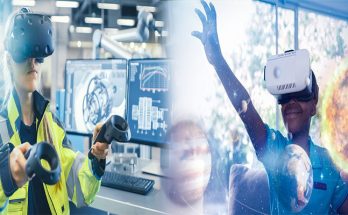The integration of technology into traditional education settings has the potential to revolutionize the way students learn and educators teach. However, this transition is not without its challenges. In this article, we will explore some of the key hurdles that educational institutions face when implementing technology in traditional classrooms and discuss strategies for overcoming these challenges.
Access and Equity
Perhaps the most significant challenge in implementing technology in traditional education settings is ensuring equal access for all students. Not all students have equal access to devices and high-speed internet at home, which can exacerbate existing educational inequities. The “digital divide” between students from different socio-economic backgrounds must be addressed to ensure that all students have the same opportunities for learning.
Strategy: Schools and districts can address this challenge by providing devices and internet access to students in need. Collaboration with communities, businesses, and government entities can help bridge the digital divide and ensure that all students have equal access to technology.
Professional Development for Educators
Another obstacle to integrating technology in traditional education is the need for adequate professional development for educators. Many teachers may not feel comfortable or confident in using new technologies in their teaching practices, leading to underutilization or ineffective implementation of technology in the classroom.
Strategy: Schools and districts should prioritize ongoing professional development opportunities for educators to build their technological skills and familiarity with digital tools. This can include workshops, training sessions, and peer collaboration to ensure that teachers are equipped to effectively leverage technology for educational purposes.
Resistance to Change
Resistance to change is a common challenge when implementing technology in traditional education settings. Some educators and administrators may be hesitant to adopt new technologies due to concerns about the potential disruption to established teaching methods, curriculum, and classroom dynamics.
Strategy: Addressing resistance to change requires thoughtful communication and collaboration among all stakeholders, including teachers, administrators, and parents. Providing a clear rationale for the integration of technology, demonstrating its benefits through pilot programs, and soliciting input from the school community can help alleviate concerns and build support for the use of technology in education.
Privacy and Security Concerns
Maintaining student privacy and data security is a critical consideration when implementing technology in educational settings. Schools must adhere to strict regulations and standards to safeguard student data and ensure that any technology used in the classroom complies with privacy laws.
Strategy: Schools should establish comprehensive data privacy policies and protocols for the use of technology in the classroom. This includes partnering with reputable technology providers, conducting regular security audits, and providing students and parents with transparent information about data collection and protection practices.
Infrastructure and Technical Support
Effective implementation of technology in education requires robust IT infrastructure and technical support. Without adequate hardware and reliable technical assistance, schools may struggle to maintain and optimize technology for educational purposes.
Strategy: Schools and districts must invest in building and maintaining a reliable IT infrastructure, as well as providing ongoing technical support for educators and students. This includes ensuring access to updated devices, sufficient bandwidth, and responsive technical assistance to address any issues that may arise.
While there are significant challenges to implementing technology in traditional education settings, these obstacles can be overcome through strategic planning, investment, and collaboration. By addressing issues of access and equity, providing professional development for educators, addressing resistance to change, ensuring privacy and security, and improving infrastructure and technical support, educational institutions can successfully integrate technology into the classroom to enhance student learning and prepare them for the digital world.





